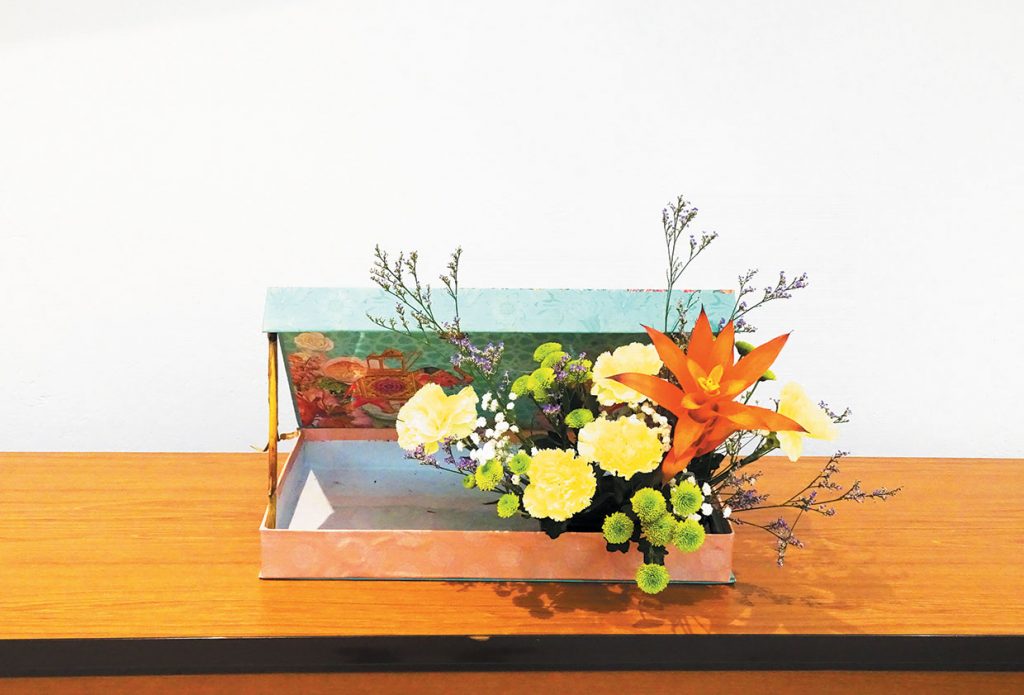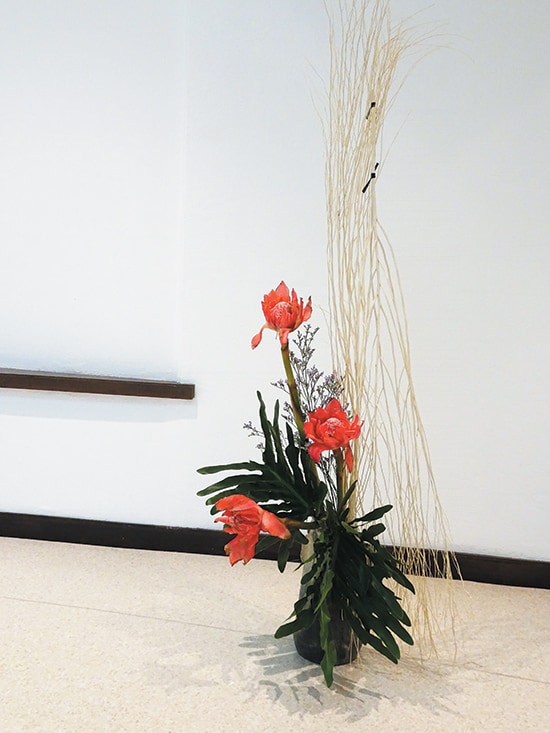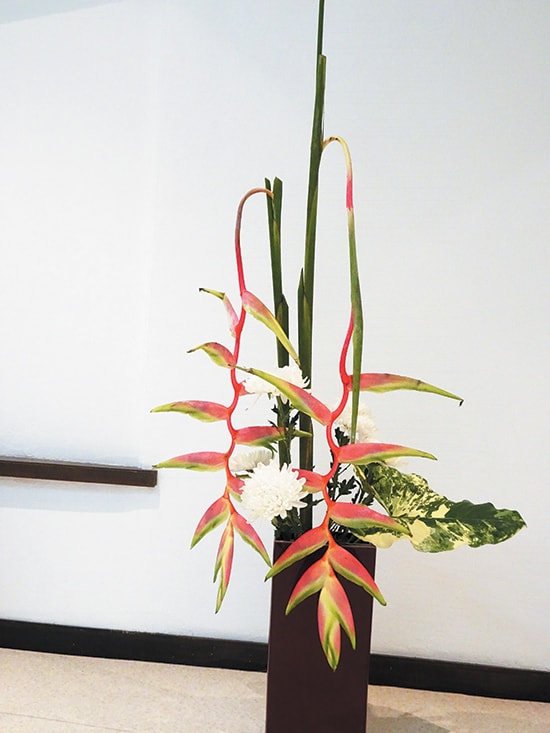I recently discovered ― or rediscovered ― the art of Ikebana, the famed Japanese art of flower arrangement, thanks to an invite from the Embassy of Japan in the Philippines.
As someone who studied in Japan as an exchange student, I’ve always been familiar with this Japanese art but it was only last month that I tried to learn how it’s done when I joined an Ikebana Demonstration by Ikebana master Sharmila Agarwal of India.
Master Sharmila holds an Associate First Master’s degree from the renowned Ohara School of Ikebana in Japan and has been conferred the unique individual title of “Koyo.”


She has been practicing and teaching the art of Ikebana for 21 years and has conducted Ikebana exhibitions and demonstrations in various institutions all over India.
What did I see during the demonstration?
During the session, held at the Embassy one afternoon last month, I learned how to arrange flowers in a way that achieves balance and harmony and one that mimics the beauty of nature.
I learned that lines, shapes and points of views are important in making the arrangements. Colors, of course, are also important considerations.

It is important to choose flowers whose colors complement each other and do not clash and to put them together so they seem to blend seamlessly as if they were made to be together.
Ikebana practitioners
After the demonstration, I had a chat with master Sharmila and she explained that Ikebana is part of who she is.
“Ikebana has given me my identity. It is also very relaxing and is like meditation,” she said.
Daily life
“The motive behind Ikebana is not only to appreciate the exquisiteness of nature but also to embrace it in our daily life. It is not only arranging flowers in a container but bridging the gap between nature and humanity, a way to discern and assimilate the nature in our life on a deeper level,” Master Sharmila said in her book Discovering Ikebana which she shared with participants.
Kyoto Mornings
I also met Filipina Ikebana practitioner Marjorie “Joy” Madrid, author of the newly launched book Kyoto Mornings in Autumn, which is all about Ikebana.
The book is Madrid’s personal journey after she retired as a banker and discovered another life and another part of herself with the art of Ikebana.
She studied the art at the headquarters of Ikenobo Ikebana in Kyoto, Japan in 2009.
“We were students from all over the world…It was a perfect environment for learning,” she said in her book.
That started her yearly visit to Japan to learn more about Ikebana.
“And every year hence, I was able to immerse myself in Ikenobo classes and join the exhibit circle at Headquarters. I acquired a deeper understanding of the basic principles behind the classic and contemporary styles,” she said.
One can learn so much more from her book on Ikebana.
Here are some Ikebana styles she also shared in a separate email to me:
Rikka Shofutai is the portrayal of the beauty of a natural landscape.
“Its character enables the arranger to present nature’s features i.e., lofty mountains, low-lying hills, near and distant peaks, cliffs and water flowing.”

Shimputai is the contemporary version of Ikenobo Rikka, but still possessing the traditional and formal sense of beauty of the style.
Another style is the Shika Shofutai, which is the traditional presentation of shoka.
“The arrangement will show the natural growth energy of plants and flowers. Usually a single material is chosen, but up to three kinds of plants may be used,” she said.
Shoka Shimputai is the later variation after Shoka Shofutai. It does not rely on a set form or pattern. It is composed of two main parts: shu and yo, and if warranted a third material known as ashirai. Between shu and yo, sharp delineations such as long and short, bright and dark, and other stark contrasts and differences in form and vigor must be shown, she said.
Hiyuka or freestyle is a modern expression of the traditional styles in Ikebana.
“The materials are flowers, leaves, and branches. A theme is a must, expressed by using plant materials and deliberately arriving at a generalized shape or form. Careful thought and order must be observed keeping principles and steps involved in the creative process. The style may be wired,” Madrid also said.
The history of Ikebana
Also known as kadō or “way of flowers,” the Ikebana is a tradition in Japan, which is all about arranging flowers.
Here’s what I learned about this art from Wikipedia:
The tradition dates back to the Heian period, when floral offerings were made at altars.
Later, flower arrangements were instead used to adorn the tokonoma of a traditional Japanese home.
Ikebana reached its first zenith in the 16th century under the influence of Buddhist tea masters and has grown over the centuries, with numerous distinct schools extant today.
Three classical Japanese arts
Ikebana is counted as one of the three classical Japanese arts of refinement, along with kōdō for incense appreciation and chadō for tea and the tea ceremony.
Ikebana is derived from the Japanese words ikeru, which means “to arrange flowers, have life, be living” and hana or “flower.”
Matsuda Shigehiro, Director/First Secretary of the Japan Information and Culture Center, said the demonstration is part of the Embassy of Japan’s efforts to promote and share Japanese culture to Filipinos and foreigners alike and especially those who have a passion for this age-old Japanese art.
Indeed, it was an afternoon well spent. Ikebana is a peaceful, meditative practice. It is also sustainable as practitioners work not only with fresh blooms but with a variety of unconventional materials.


